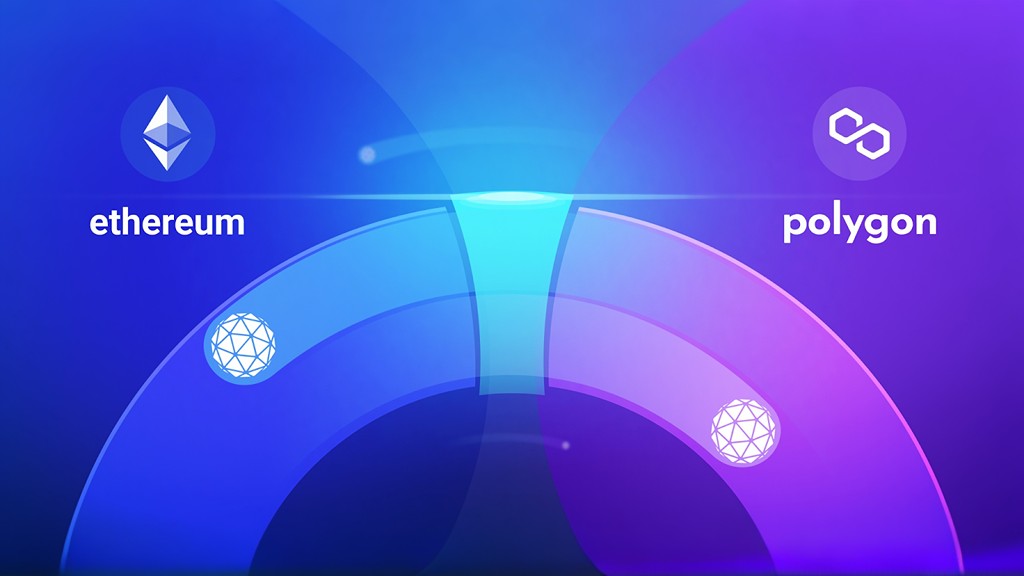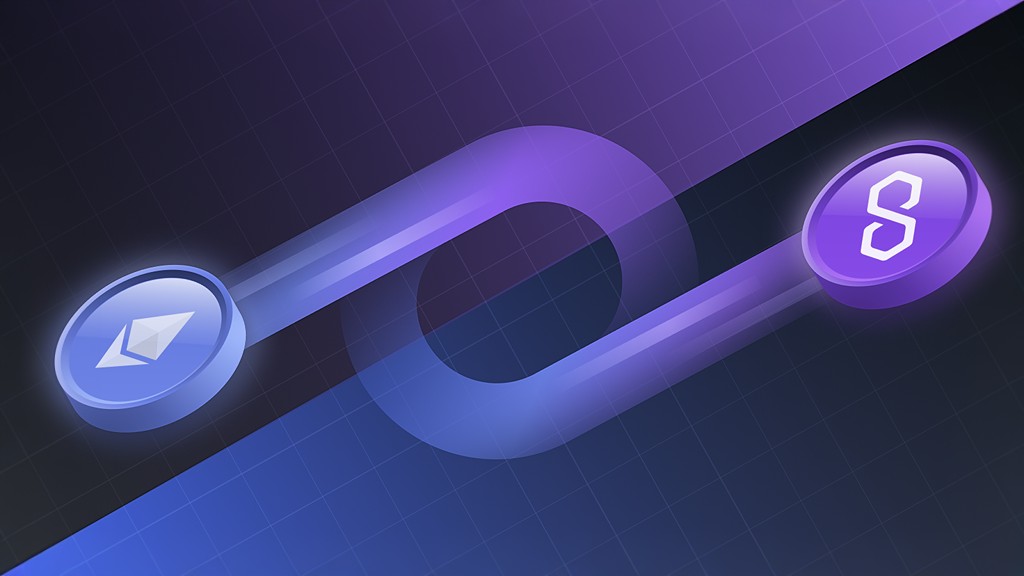Hey there, crypto enthusiasts! Today, we’re going to dive into the world of blockchain bridges by exploring how to move assets between Polygon and Ethereum.
As many of you probably know, Polygon (previously called Matic Network) is a Layer 2 scaling solution designed to provide faster and cheaper transactions for Ethereum. Polygon uses a network of sidechains that connect back to the Ethereum mainchain, allowing you to move assets between the two chains.
This interoperability opens up a whole new world of possibilities! For example, you can take advantage of Polygon’s blazing fast and low-cost transactions to trade tokens or interact with DeFi protocols. Then, when you’re ready, you can move your assets back to the more secure Ethereum mainchain.
But how exactly do you go about moving tokens between these two interconnected blockchains? Well, that’s exactly what this guide aims to cover! I’ll explain everything you need to know, from understanding wrapped tokens to step-by-step instructions for bridging assets between Polygon and Ethereum.
Whether you’re just getting started with Layer 2 solutions or looking to dive deeper into multi-chain strategies, this guide will equip you with the knowledge to start bridging like a pro! So buckle up and get ready to become a cross-chain virtuoso!
Oh, and before we jump in, here’s a quick tip on How To Buy Ethereum On Etoro: 3 Quick Steps Guide. This popular trading platform makes it super easy to invest in crypto like Ethereum in just a few clicks.
Why Bridge Polygon and Ethereum?
Now that you’ve got the basics down let’s talk about why you’d even want to bridge assets between Polygon and Ethereum in the first place.
There are a few key reasons these two chains are better together:
First up is the speed and low fees of Polygon. One of the biggest bottlenecks for Ethereum is scalability – with so much usage, gas fees and transaction times can get crazy high. This is where Polygon comes to the rescue!
Transactions on Polygon settle in just a few seconds and cost a fraction of a penny in gas. We’re talking 1000x faster and 100x cheaper than transacting directly on the Ethereum main chain. This makes Polygon ideal for activities like trading, yield farming, and playing blockchain games.
However, Polygon does sacrifice some decentralization and security by relying on a network of validators instead of miners like Ethereum. This is where the Ethereum mainchain’s superiority comes into play.
Ethereum is still king when it comes to blockchain immutability and security. By bridging back to Ethereum, you can ensure your assets are backed by the full proof-of-work security model of the OG smart contract chain.
Bridging gives you the best of both worlds – speed and low fees upfront, with a secure home for long-term storage.
Finally, bridging allows access to tokens and apps only available on each chain, like stablecoins, NFTs, DAOs, and other assets unique to each environment.
So, in summary – bridging lets you maximize productivity and minimize costs on Polygon while benefiting from the robust security of Ethereum in the background. The interoperability unlocks vastly expanded utility for both ecosystems.
On to the next step – understanding wrapped tokens!
Understanding Wrapped Tokens
When bridging between blockchains, you’ll often encounter something called “wrapped” tokens. But what exactly are wrapped tokens, and why are they used?
Simply put, wrapped tokens are assets that have been converted into a compatible format so they can function on another blockchain.
For example, to bring ETH from Ethereum onto Polygon, it first needs to be converted into a wrapped version called WETH (Wrapped Ether). This WETH is a token formatted to work on Polygon but backed 1:1 with real ETH sitting in reserve on Ethereum.
The ETH is “wrapped” into a Polygon-compatible form!
This wrapping and unwrapping allows assets to move freely between the two chains while still maintaining their original value.
Here’s a quick rundown of the wrapping process:
To bridge ETH from Ethereum to Polygon, you would:
- Wrap your ETH into WETH on Ethereum
- Bridge the WETH to Polygon
- Unwrap the WETH back to ETH once on Polygon
To go from Polygon back to Ethereum, you would:
- Wrap your MATIC or other Polygon assets into a wrapped token.
- Bridge the wrapped asset to Ethereum
- Unwrap to retrieve your original token
Pretty straightforward, right? The wrapped tokens act like envelopes, shuttling assets between the two blockchains.
Understanding this mechanism is key to bridging smoothly. Now, let’s get hands-on with step-by-step instructions!

Step-by-Step Guide to Bridging Tokens
We’ve covered the why and the what of Ethereum-Polygon bridging. Now it’s time for the how!
In this section, I’ll walk through a step-by-step guide on how to actually bridge tokens between the two chains.
Here are the 6 key steps:
1. Select a Bridge Service
There are a few different services available for bridging assets between Ethereum and Polygon, including official bridges from Polygon as well as decentralized bridges built on smart contracts.
For beginners, I recommend using the Polygon Bridge, which offers a simple UI and direct integration. Other options like Connext, Hop Protocol, and cBridge are great, too.
2. Connect a Compatible Wallet
You’ll need a crypto wallet that is compatible with both Ethereum and Polygon. Top choices include MetaMask, Coinbase Wallet, WalletConnect, or any EVM-compatible wallet.
For added security, consider using a hardware wallet like Ledger or Trezor connected to MetaMask.
3. Bridge ETH/Tokens from Ethereum to Polygon
On Polygon Bridge, switch to the Ethereum tab and select the asset you want to move. Enter the amount to bridge and connect your wallet.
Approve access to the token, and then initiate the transfer! Depending on volume, bridging usually takes 5-10 minutes.
4. Bridge Tokens from Polygon back to Ethereum
To go back the other way, use the Polygon tab on Polygon Bridge. Select your bridged asset, enter an amount, connect your wallet, and start the transfer!
The process is just as quick and easy as heading back to Ethereum.
5. Track Bridge Status
You can monitor pending transactions on the Polygon Bridge Explorer. Here, you can view details and confirm the bridge worked correctly.
6. Use Bridged Assets on Each Chain!
Once bridging is complete, your tokens will be available on the destination chain. You can now use them for trading, yield farming, governance – anything you want!
And that’s it! By following these steps, you can smoothly bridge assets between Ethereum and Polygon.
Now, let’s quickly discuss some key considerations.
Pros, Cons, and Risks of Bridging
Bridging between blockchains offers some great benefits but also comes with certain tradeoffs and risks to be aware of.
On the pro side, some of the major upsides of bridging Polygon and Ethereum include:
- Speed and low fees – As discussed, bridging to Polygon provides much faster and cheaper transactions compared to Ethereum mainnet. This expands on what types of crypto activities are practical and affordable.
- Interoperability – Bridging gives access to unique assets, apps, communities, and services across both chains. This unlocks more diverse functionality and liquidity.
- Security – Storing and transacting high-value assets on Ethereum gains the rock-solid security of proof-of-work and true decentralization.
However, there are some drawbacks and risks to evaluate:
- Centralization – Polygon’s network of validators represents a degree of centralization away from Ethereum’s more decentralized ethos.
- Technical complexity – Bridging across chains is a newer technology and can be seen as more technically complex compared to single-chain transactions.
- Security tradeoffs – Assets bridged to Polygon gain transaction speed at the cost of some security during the bridging process itself.
- Bridge exploits – Like all new tech, bridge contracts can contain risks and vulnerabilities open to potential exploits.
Thankfully, these risks can be minimized by taking steps like using established bridge protocols, validating contract code, bridging smaller test transactions, and not storing major value on bridged chains long term.
As with all things crypto, it’s smart to assess risks, mitigate what you can, and use bridges as a utility while being cautious and informed.
So, in summary – bridging opens up new opportunities but isn’t without certain considerations. Understanding the pros, cons, and risks allows you to make the most educated choices for your needs!
More info about buying Ethereum: How To Buy Ethereum On Etoro

